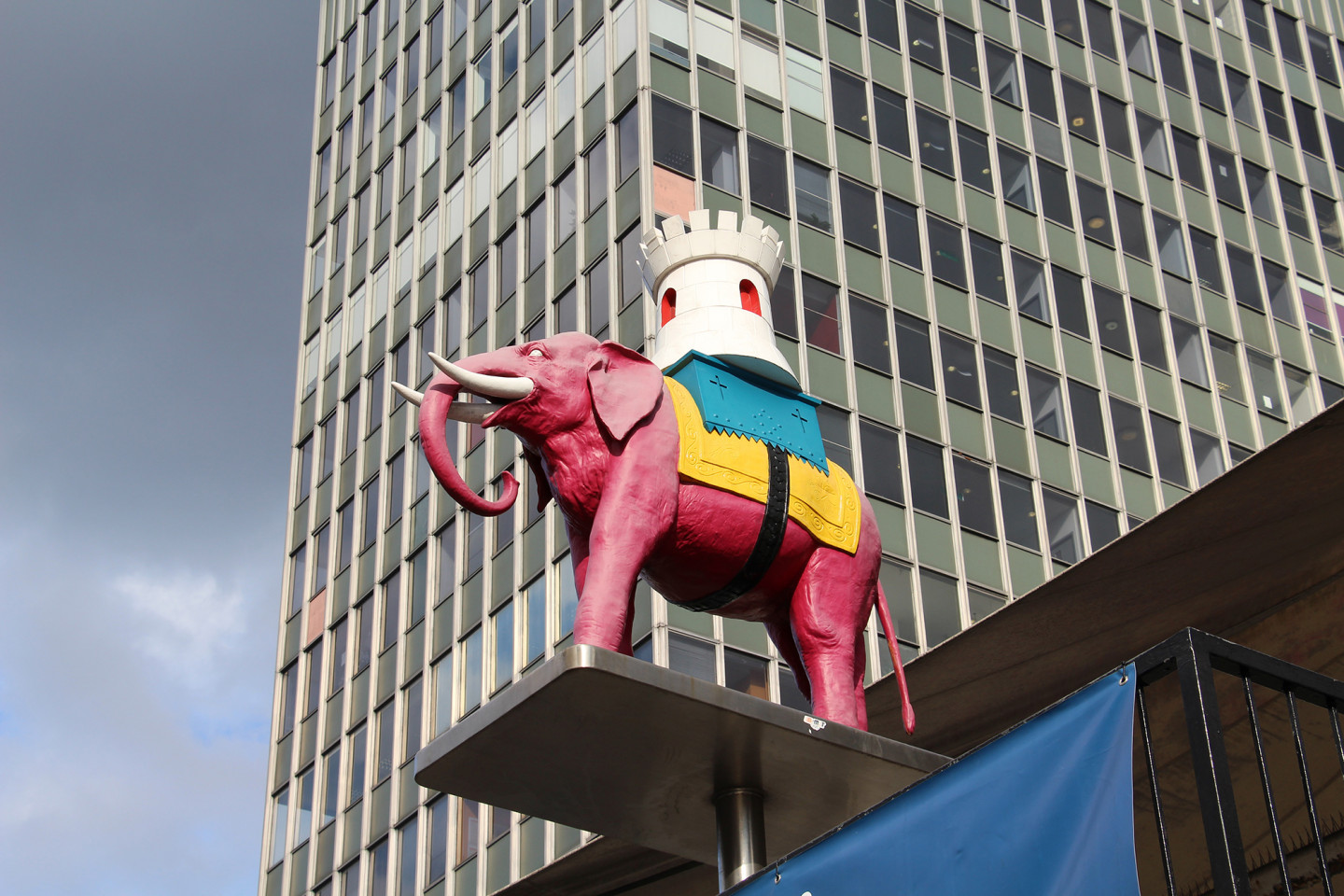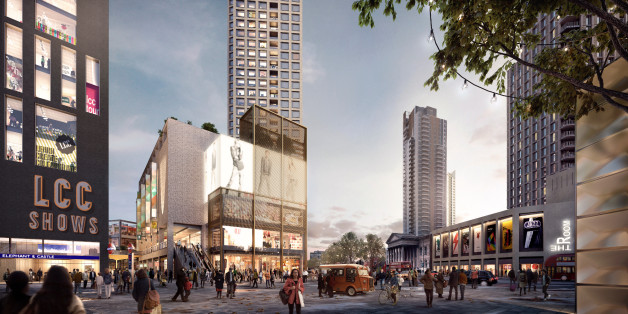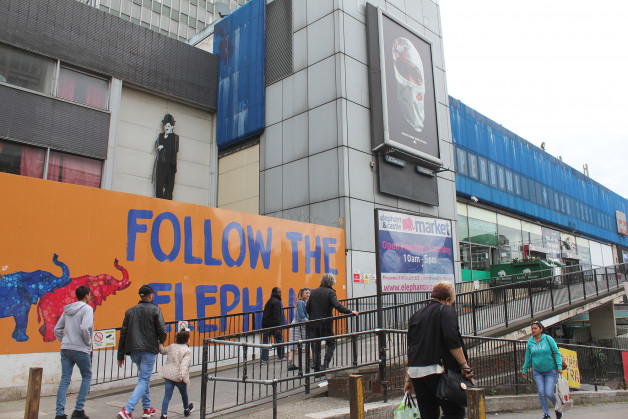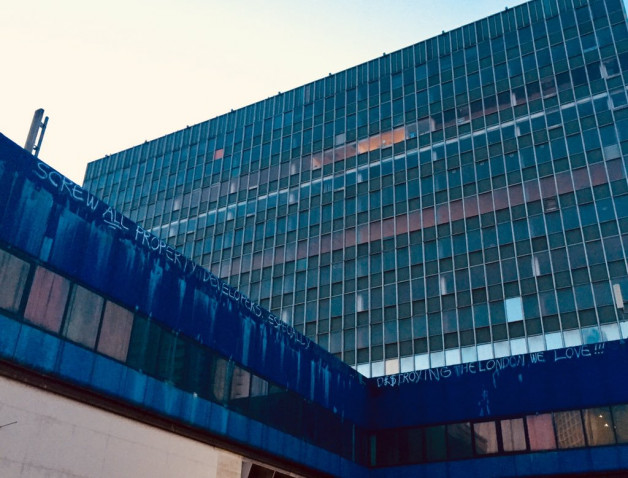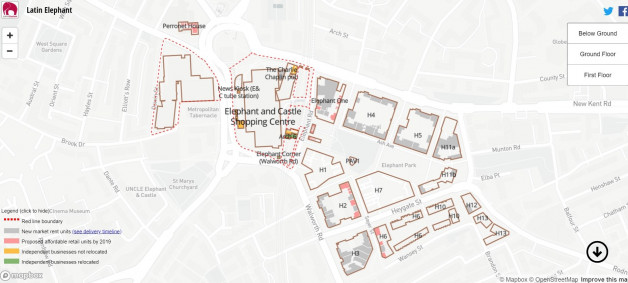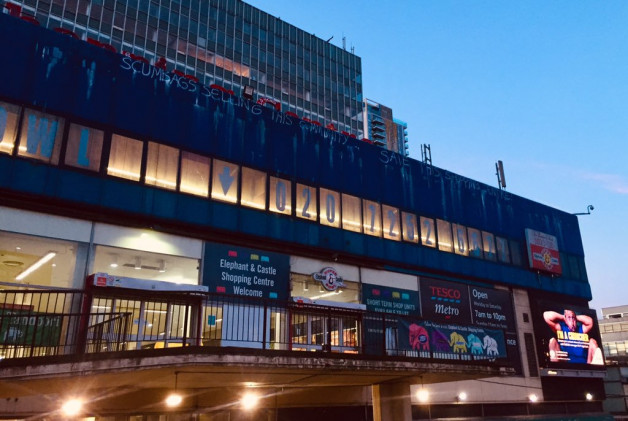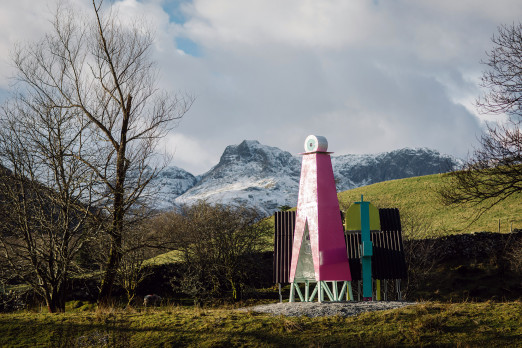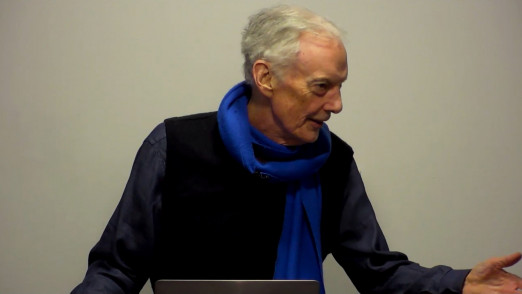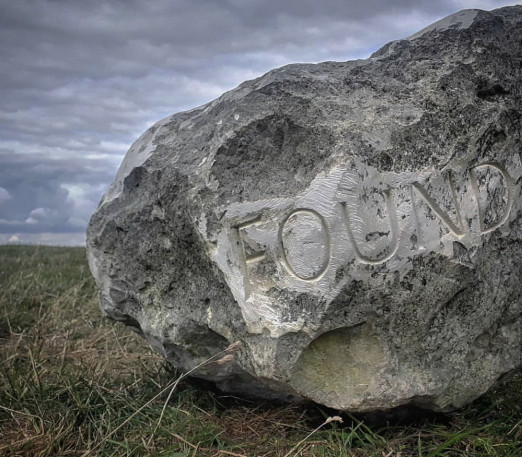Ella Jessel reports on the community-built digital map helping traders fight back against the controversial demolition of Elephant and Castle's shopping centre.
Digital mapping technology is one of the latest innovations in the development industry. Some local authorities are even requiring schemes to be submitted via costly 3D modelling platforms to show the scale and massing of large tower blocks.
But in one south London development hotspot, an interactive map has been designed with an altogether different motive. Architect Simon Salvador and journalist and researcher Santiago Peluffo created The Elephant and Castle Relocation Map as a tool for a grassroots campaign to hold a property firm to account.
In July 2018, at its second attempt, Southwark Council narrowly approved Delancey’s £2 billion plans to demolish the Elephant Shopping Centre. The developer has dubbed it the ‘Piccadilly of the South’ and hopes to restore the transport interchange to its pre-war glory with 979 homes, a multiplex cinema and a new campus for the London College of Communication (LCC).
However, the Allies and Morrison-designed Delancey development has been fiercely resisted by the local community. Objections include the number of council homes (116, up from 33) and the scant (10 per cent) provision for affordable shops and market stalls, which could uproot 100 independent businesses.
By forensically collecting wide-ranging data about the site and the centre’s current tenants, the map plots Delancey and Southwark Council’s ‘relocation strategy’ for the contested site. It is a meticulous approach to campaigning in an area where a series of high-profile estate regeneration projects have eroded local trust.
Though localised, its creators argue that campaign groups across London could deploy the method to track section 106 agreements and improve the visibility of marginalised communities.
Elephant and Castle’s shopping mall has long been considered an eyesore – especially in the 1990s when, for a brief spell, it was painted a garish pink. But to many living in and around it, the dishevelled centre is a popular hangout. It contains a bowling alley (now closed) and a bingo hall that welcomes 650 players per day.
It is also the epicentre of Southwark’s so-called ‘Latin Quarter’ – a cluster of shops, hairdressers, cafes and nightclubs catering to the borough’s significant Latin American population (approximately 9 per cent). Arriving in the 1990s, migrants from central and south America set up shop and injected life into the struggling mall, the market ‘moat’ and railway arches.
There are fears the new scheme, currently on hold pending a judicial review application, will spell the end for places like Distriandina, a popular Colombian café by day and salsa bar by night. Distriandina has occupied an unassuming railway arch for more than 20 years. Over their £1 cups of coffee, Salvador and Peluffo explain the problem with the relocation.
'It has been poorly handled’, says Peluffo, project co-ordinator at the charity Latin Elephant. He explains that while there are around 130 businesses, and they were originally told there would be enough space for 80 displaced traders, it turns out that only 36 have been offered a unit. Consequently, many will leave the area, and those that stay will be forced to downsize.
‘The map is very important because it shows how many units they promised in official planning documents, and how many they are actually delivering’, adds Peluffo.
Both Delancey and Southwark insist they are working with traders on the relocation strategy. Delancey says it has set up a ‘number of provisions, including a database of properties in the local area, a trader panel and a relocation fund of £634,000 – an amount the traders say is not enough.
Meanwhile Southwark’s planning chief, Johnson Situ, says the council is providing new affordable retail at the bottom of Perronet House and Arch Street and has ‘pushed the developers’ to include more affordable units.
As the tussle continues, the Relocation Map, which is hosted on Latin Elephant’s website, documents this complex web of information by working as a live inventory. Salvador, a Spanish architect who has worked for Pollard Thomas Edwards and Chapman Taylor, came up with the idea of creating the digital database after realising Latin Elephant had reams of data that was ‘messy’ and very hard to access.
‘Our aim was to audit [Delancey’s] relocation strategy and secondly to make visible traders that didn’t have a name or a location’, says Salvador.
The pair used the campaign’s biggest asset: ‘the trust of the traders’, to build on the existing data gleaned from FOI requests and relocation lists – by visiting each shop one-by one to find out their size and rents.
Salvador then painstakingly created the digital interactive tool on Mapbox. This visualises all the information overlaid on site maps downloaded from previous planning applications and ordnance surveys. Where sections were missing, the duo even went to the traders and measured units themselves.
The map includes each unit within Delancey’s ‘red line’, searchable by level: below ground, ground floor and first level. Businesses to have been offered space are coloured green. Those that have not are marked yellow.
Shops, cafes, mobile phone kiosks are all listed with the map showing that the restaurant Castle Tandoori, has 219.5m2 on the mall’s first level and does not have a relocation space, while Andrea's Hair & Beauty salon does.
Challenges include keeping the map up to date, says Salvador, adding he would also like to add more detail about the traders and their backgrounds. ‘It lacks a human level, at the moment the map shows their names but not their stories’.
Asked about the map’s impacts, Salvador mentions a recent meeting where a group of nine traders in a mini indoor market ‘officially’ recognised as one in the relocation strategy had used the map to show they were actually separate traders.
The data collected for the map also enabled Latin Elephant to negotiate lower rent levels in the relocation sites, including the Carl Turner Architects-designed Castle Square, which will offer temporary space for some traders.
Peluffo and Salvador also say the map’s ‘evidence-based’ data has helped open up a debate about retail units in a separate scheme - Lendlease’s contentious redevelopment of the Heygate Estate, Elephant Park.
Despite the original section 106 agreement specifying that 'displaced independent traders' from the area would be eligible for the scheme’s retail units on Sayer Street, none have been offered a spot.
Instead, units have been offered to traders from Artworks, Lendlease’s own Boxpark-style pop-up mall, which was recently cleared for the next phase of construction.
‘You can’t put [Artworks tenants] at the same level as Distriandina, which has been trading for over 20 years with a lease,’ says Peluffo. ‘What we believe is that these kind of businesses [in the Artworks units] tailor more to the kind of businesses the developer wants.’
This has raised the thorny issue of gentrification, and who the new market scheme is really ‘for’. Delancey says it recognises the area’s ‘varied modern culture’, and that it wants to combine the ‘best of old and new together’ in the new Elephant town centre.
Southwark also insists it is committed to ensuring that growth ‘works for all’. Planning chief Jonathan Situ says it will ensure investment in the borough builds on the area’s ‘incredible cultural diversity’.
However, the displacement of Distriandina and fellow music venue La Bodeguita put these words to the test. The venue owners have pointed out that while they will have to move, the techno nightclub Corsica Studios stays, and even secured £125,000 from the GLA for soundproofing.
Peluffo says the problem is that Delancey’s scheme is not inclusive. ‘We always said we’re not opposing development, we’re opposing this development. You can even build 42 storey towers, but care for people who are there.’
City Hall’s report which rubber-stamped the scheme conceded that Delancey’s scheme will bring ‘adverse equalities impacts’ on the area’s BAME and Latin American community, but it argues these losses are outweighed by the scheme’s benefits such as much-needed new housing, tube station ticket hall and LCC’s premises.
Though the results for the community might seem small – a reduced rent here, an extra unit there – the map represents businesses which often become collateral in broad-brush major developments. It’s also a blueprint for transparency that could be rolled out by other campaigns and will no doubt be closely watched by the under-threat Latin American market north of the river in Haringey.
To find out more about the Latin Elephant Campaign, visit latinelephant.org or explore the interactive Latin Elephant map here.
Ella Jessel is the AJ's Senior News Reporter and winner of New Journalist of the Year award at the International Building Press (IBP) Awards. She was also awarded a bursary from the Built Environment Trust in support of her writing.
